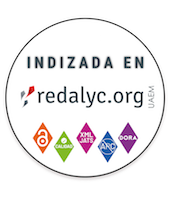Reconstitution of social practices of modeling: The linear from chemical analysis. The case of the calibration curve
DOI:
https://doi.org/10.33010/ie_rie_rediech.v8i15.57Keywords:
deconstruction, practice, modeling, chemical analysisAbstract
Our main concern is that the learning of mathematics could be experienced out of context. Because of this, we move from building the math foundations of our undergraduate students to their technical preparation; by this way, we establish a relevant math background in them. This work was developed inside the biochemical engineers’ community and it studies the technical practice of the spectrophotometry with emphasis in the calibration curve topic. The analysis of the ways in which the practice of the spectrophotometry is done was made under the consideration of the next dimensions: procedures, intentions, tools and the arguments of the ones who used them. This dimensions are uncover by the way in which the one who apply the practice of the spectrophotometry ties together the mathematical model of the physical phenomenon with the model obtained in the practice; the consequence is the setting of a model dipole. It is through the use of deconstruction, as an approximation method, that the practice of spectrophotometry has been characterized with the objective to elaborate a learning design. By applying this learning design, the acting of the students in the construction of the calibration curve is shown as well as the evidences of how they identify the necessity to adjust the data in a linear manner articulating a graphical model, obtaining different ways of prediction by using the three rules, the algebraic model or the graphical one. It is in this way that the student can achieve a strengthening of his interpretation of the practice of the spectrophotometry, reconstructing its practice.




















